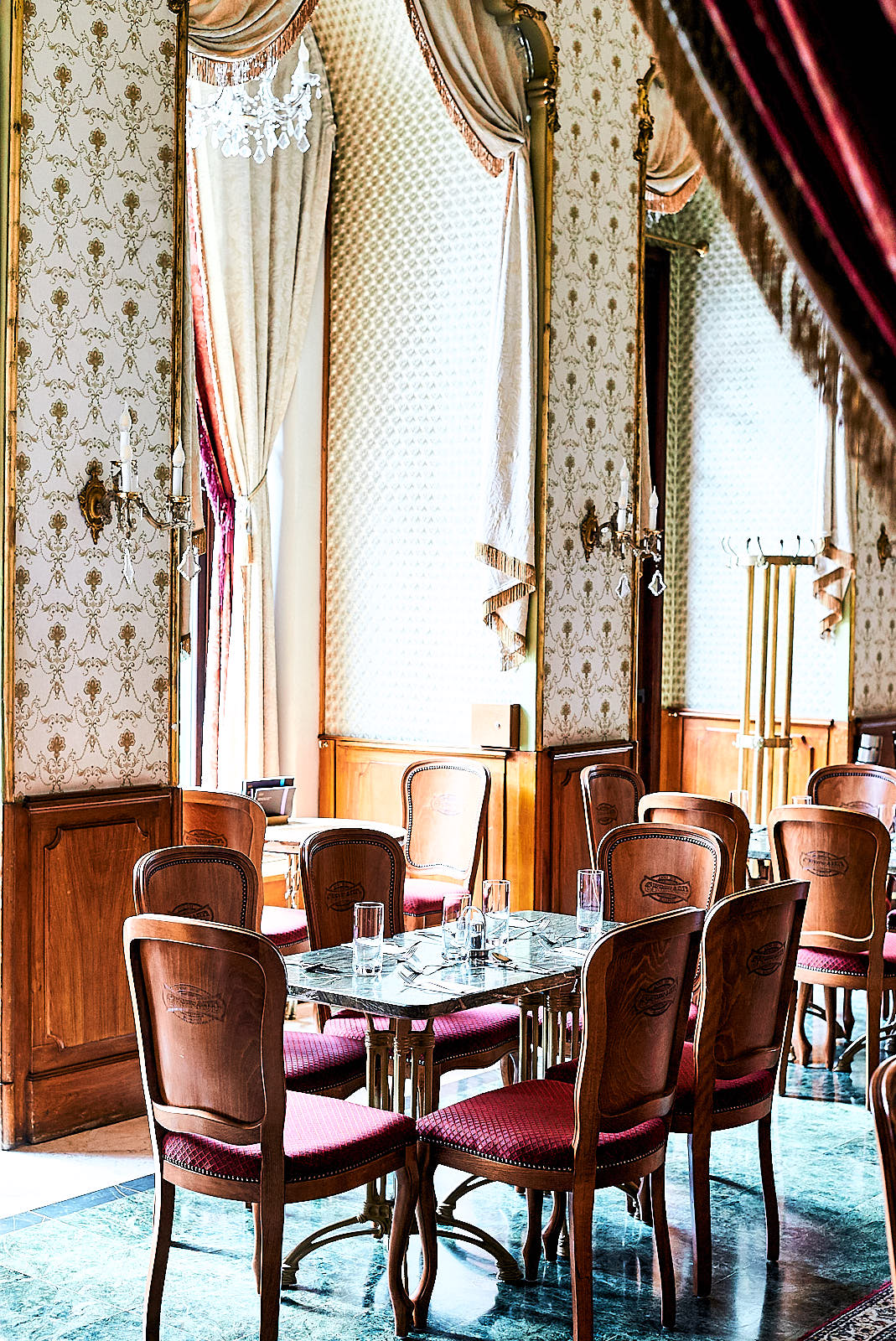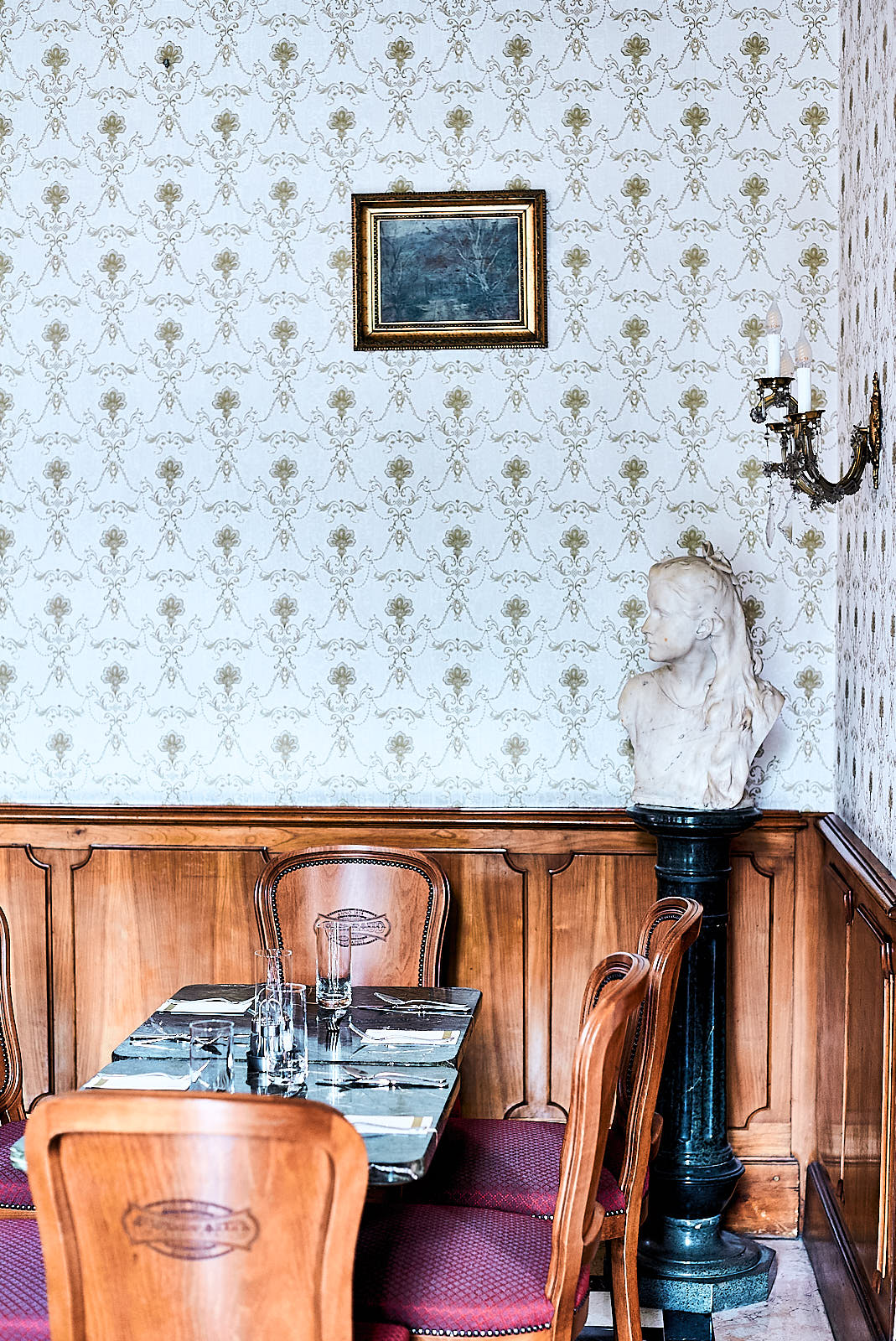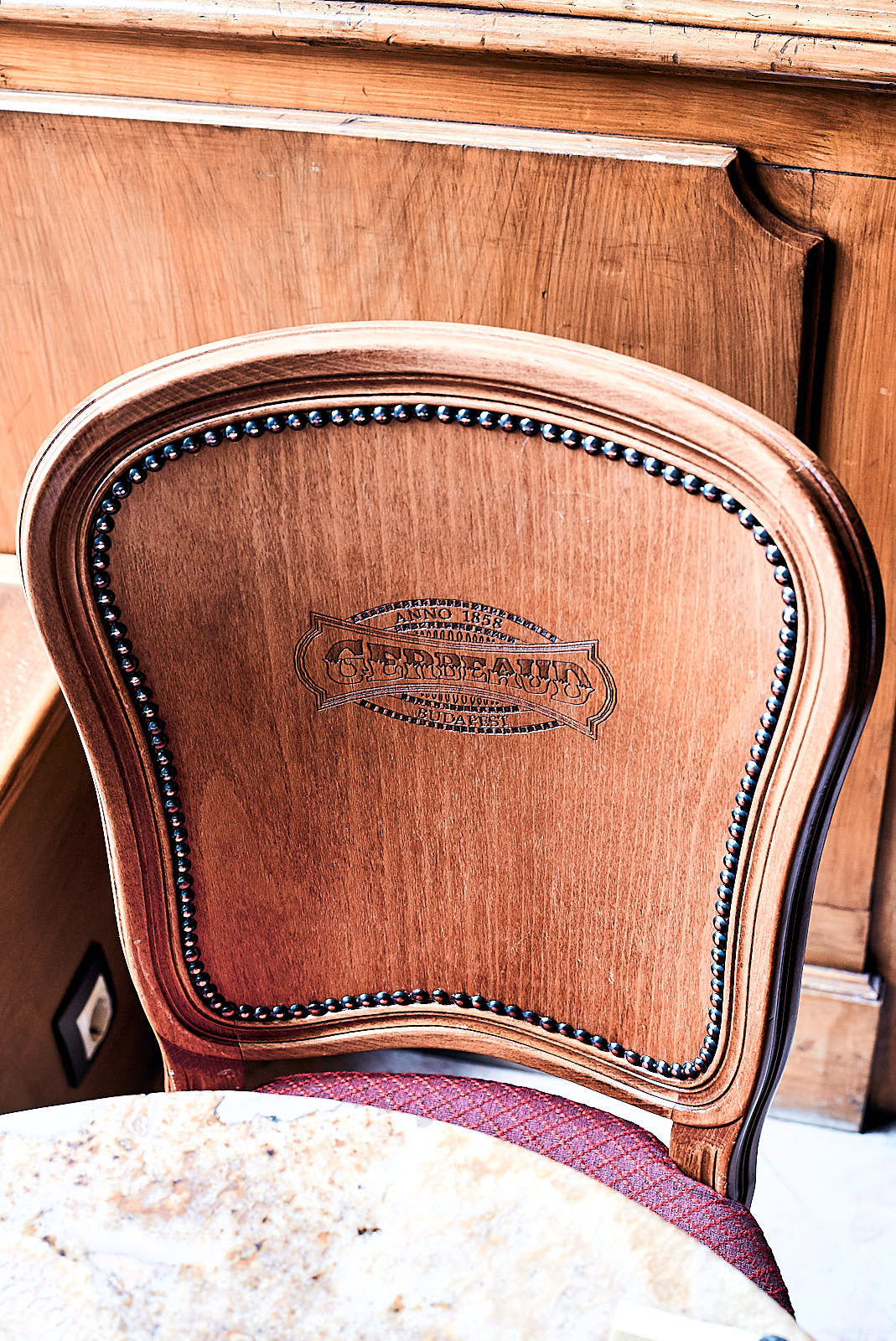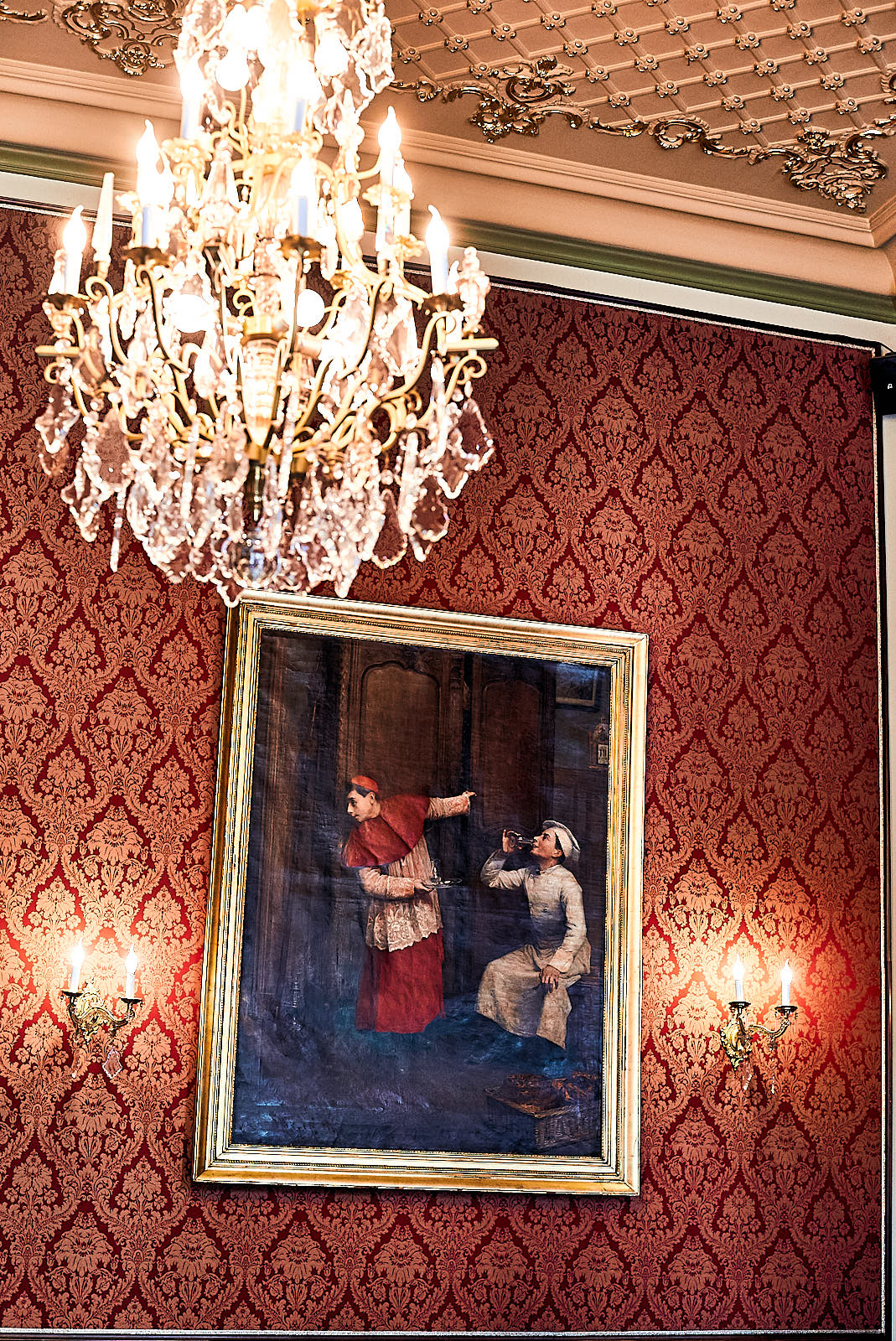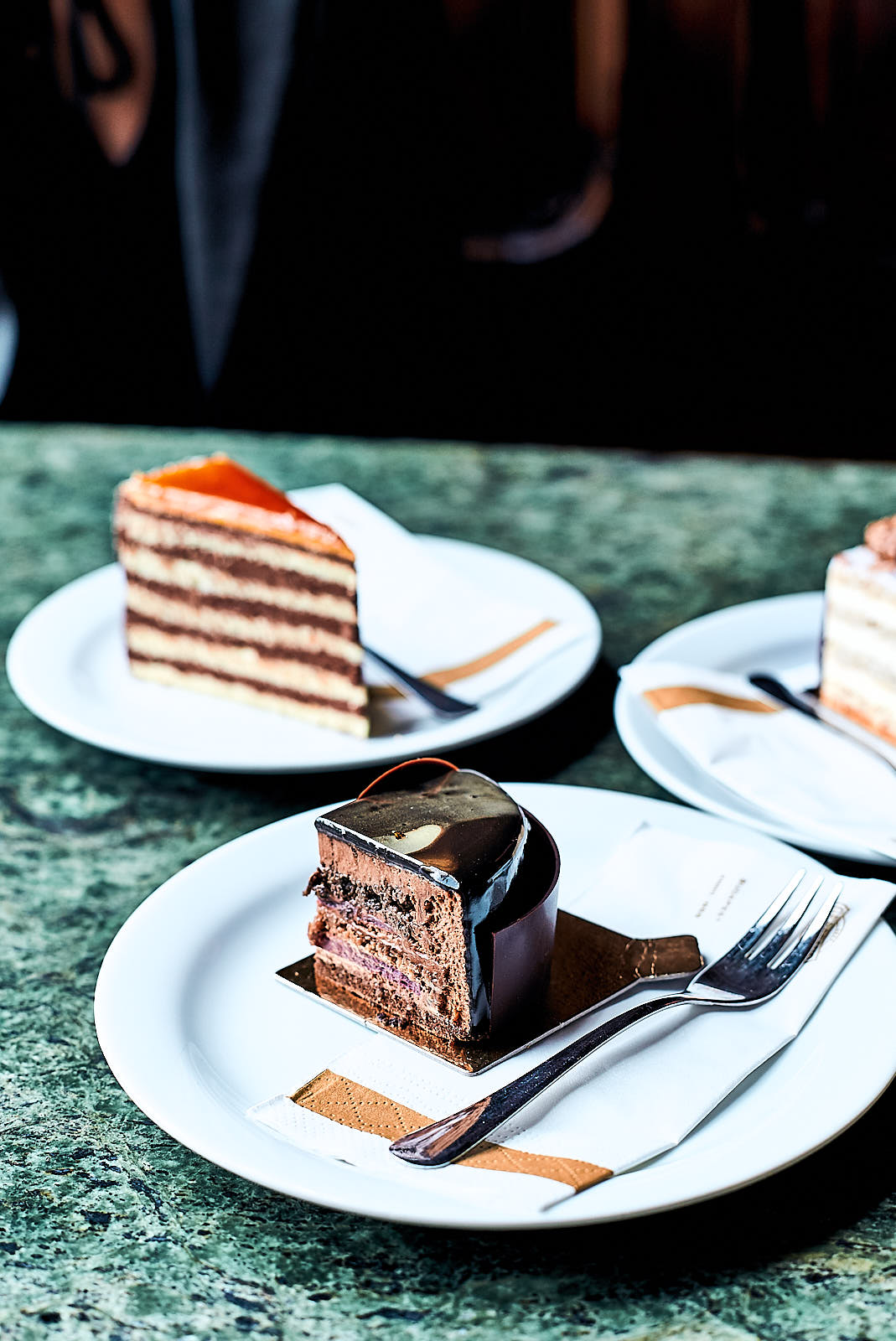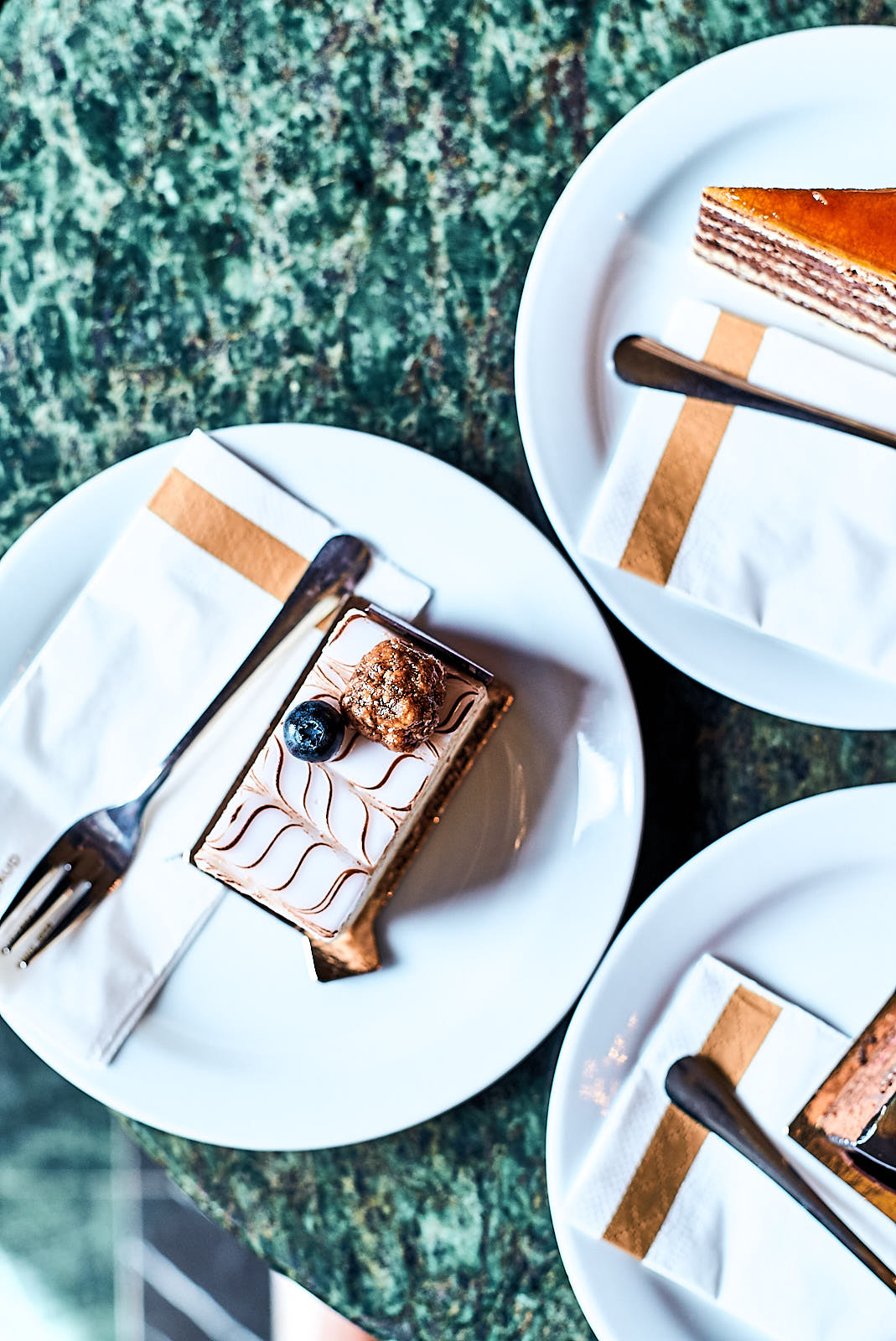Budapest. The confectioner of the royal court
You know a cake is delicious when you have the first bite and there’s silence afterward and two days later, you wish you were there, back at the cafe eating it again. Thinking about going to Hungary seven years ago, I had no idea I would have to think about cake culture. Not just one cake, but quite a few: Dobos and Esterházy, just to name a few. I've always known that in during the empire, Hungary was next to Austria and other countries and there had to be cake eating traditions, but they’re not often the best. Gerbeaud changed my mind.
But I happened to be there only because of dear Peter Szlepky who, no matter which cafe I offered as my destination for Dobos, guided us to Gerbaud. I thought it was the most touristy place on earth. That changed the moment we were lucky enough to enter the kitchen to see how Dobos torte is made and afterwards, sat down and had the cakes slowly melt on our tongues.
Gerbaud, dating back to 1858, is one of the most praised and sweetest Hungarian traditions that began with Mr. Kugler Henrik, who, on October 14, opened a cafe-confectionary at Jozsef Square. Just ten years later, this place was one of the most visited confectioneries in Budapest, attracting the wealthiest part of the society for two reasons – the confections and the stunning interior. At that time, there was always a third reason – gossip. Not long after, Mr. Kugler decided to move his cafe to Vörömarty Square.
Up until then, Gerbeaud was a place to enjoy hot coffee, frothy cacao, decadent liquors, and sweet confections. In the 1870s, Kugler did something never done before – he offered to wrap cakes to take away, and although staying in the cafe to slowly eat the best ice cream in Pest (Hungarians are wild about eating ice cream), this invention made his confections and cakes more desirable and famous.
All the fame and work lead him even closer to success, and in 1875, he became the confectioner to the Royal and Imperial Court. As he neared the best years of his life, he understood that no one could continue his legacy and Mr. Émile Gerbeaud appeared.
Émile was a Swiss-born confectioner who Kugler met in Paris. After few years later, Gerbaud agreed to become Kugler's partner, moved to Budapest with his family, and started work. Coming from Paris at that time and being born into a confectionery trader family, he played a significant role in the Hungarian pastry scene. He introduced Hungary not only to custard filled cakes but also invented many other desserts that are still famous today.
With knowledge and talent, he took the cafe to another level by opening a chocolate factory, winning gold medals in national fairs, hiring employees, and gaining sales. Entering Cafe Gerbaud at that time was tempting – there were a hundred types of cookies and candies, cakes and chocolates; the air was filled with the aromas of butter, vanilla, boiling coffee, and sweet hot chocolate. Some sat there to enjoy liquors and some a cup of tea.
Today, after celebrating 160 years, there are innovations and new modern products, but nothing compares to Gerbaud's invention – chocolate cat’s tongue, liquor, and cherry filled chocolate bonbons, and even after three slices of cake, the first ones are those that you have to put in your bag and take home.
After the death of Kugler, the cafe interior was finished by Henrik Darilek, lover of marble, exotic wood, and bronze, which is still obvious today at the cafe. As for many, wartime was hard, and although Emile survived war, he died later and the cafe went into the hands of the wife. Although many people, including me, think the name Gerbaud has always been there, it has been there only since 1984, but that does not change the spirit of Henrik and Émile and their legacy.
Today, as I remember our first days in Budapest, I still walk in my mind’s eye to Gerbaud, enter the grand Belle Epoque and Hungarian imperial era cafe, and look at cakes like a child who is seeing a cake stand for the first time. In my head, I still see the cakes lined in the old fashioned fridge, the chocolates shiny as stars, and the cafe walls covered with red fabric wallpaper. I like to close my eyes and to go back there because there's nothing like Gerbaud – with everything they make.
Musts at Gerbaud:
Dobos torte – the best place in the city to have it
Esterházy torte – walnut and vanilla marriage that blows your mind
Gerbaud torte – 160th-anniversary torte with layers of dark chocolate (developed especially for Gerbaud by Valrhona), walnut, peaches, caramelized pecans, and caramel that can make you cry.
To eat there or take away – cognac cherry bonbons (the most famous of all)
Address
Budapest, Vörösmarty tér 7-8, 1051 Hungary
www.gerbeaud.hu/en/
Traveling to Hungary in cooperation with Embassy of Hungary to Latvia
Story and pictures: Signe Meirane
Camera: Sony Alpha 7s


